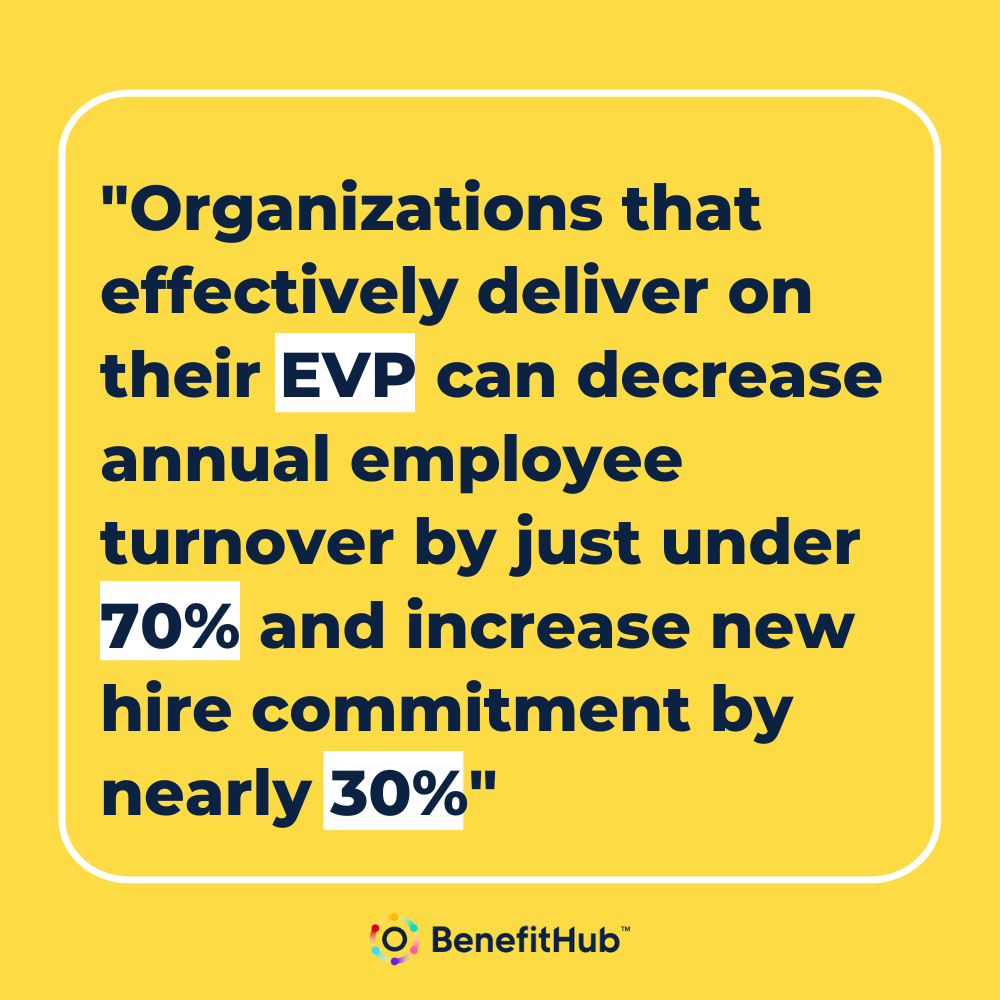Discover the key components of Employee Value Proposition (EVP) and learn which pillar HR can easily enhance to improve overall employee satisfaction and retention.
Understanding Employee Value Proposition (EVP)
EVP refers to the unique set of benefits and rewards that an organization offers to its employees in exchange for their skills, talents, and contributions. It encompasses the overall value that employees receive from their employment experience. Understanding EVP is crucial for Human Resources (HR) professionals as it helps in attracting and retaining top talent. According to Gartner, "Organizations that effectively deliver on their EVP can decrease annual employee turnover by just under 70% and increase new hire commitment by nearly 30%" (1).

An effective EVP takes into account the needs and expectations of employees and aligns them with the goals and values of the organization. It goes beyond just monetary compensation and includes various elements that contribute to employee satisfaction and engagement.
By understanding EVP, HR professionals can develop strategies to enhance the overall employee experience and create a positive work environment.
The 5 Pillars of EVP
The 5 pillars of Employee Value Proposition are:
- Compensation: This pillar includes the monetary rewards that employees receive, such as salary, bonuses, and incentives.
- Total rewards package including work-life balance: This pillar encompasses the overall benefits and perks offered by the organization, including work-life balance initiatives, flexible working arrangements, and employee wellness programs.
- Career advancement opportunities and stability: This pillar focuses on the opportunities for growth and advancement within the organization, as well as job security and stability.
- Contribution to the world or corporate value: This pillar highlights the organization's impact on society and the world, including its ethical practices, corporate social responsibility initiatives, and sustainability efforts.
- Company culture: This pillar includes the values, beliefs, and behaviors that shape the work environment and employee experience.
Each of these pillars plays a significant role in shaping the overall EVP and contributes to employee satisfaction and retention.
The Easiest (and Least Expensive) Pillar for HR to Improve
While all the pillars of EVP are important, HR) can easily affect at least a few of these pillars. The easiest (and cheapest) pillar for HR to improve is company culture.
Improving company culture involves instilling a sense of purpose, shared values, and positive behaviors within the organization. Not sure where to start? Ask yourself the following questions: Are the organization's mission, vision, and values clearly defined and communicated? Do we as a company encourage open communication and collaboration among employees? Are there ample opportunities for professional development and growth? Would you consider your place of work to be a supportive and inclusive environment? And lastly, do we recognize and reward employees who exemplify the desired culture?
If not, those are good places to start. Focus on culture and communication is a rising trend in the past few years, and especially in 2024 and into 2025. Randstand Enterprise reports that "fortifying culture remains at the top of human capital leaders' wish lists this year; 1 in 4 say they want to invest more in the way they articulate strong company values and their value proposition to employees" (2).
By focusing on improving company culture, HR can positively impact employee satisfaction, engagement, and retention. Consider ways to add additional learning opportunities. Learn more about reward programs.
Enhancing Work Perks and Benefits
Another important aspect of EVP is the work perks and benefits offered by the organization.
A good place to start is getting an idea of the current satisfaction level surrounding existing offerings - conduct surveys or feedback sessions to understand the preferences and needs of employees regarding perks and benefits. From there, you can enhance existing benefits based on employee feedback, or introduce new perks and benefits that align with the values and interests of employees. Both traditional employer-paid offerings and supplemental benefits employees can elect to pay for are a part of offering a wider array of benefits. 73% of employees say that a wider array of benefits would make them continue working at their employer for longer, according to Metlife (3). Fertility benefits, parental leave policies, pet insurance, and EAPs offering access to legal support and financial planning are among the voluntary benefits that have gained traction with employees. One low cost way to offer additional benefits is by introducing a voluntary benefit and employee discount platform like BenefitHub.

Lastly, be sure to communicate the available perks and benefits effectively to employees, and regularly review and update the perks and benefits offered to stay competitive in the market.
By continuously improving work perks and benefits, HR can create a positive employee experience and increase employee retention. One cost-effective way to add additional work perks and benefits to your employee offering is by employing a platform such as BenefitHub. Learn more.
Strategies for Improving Employee Retention
Improving employee retention is a key objective for HR professionals, as it helps in reducing turnover costs and maintaining a stable workforce.
Some strategies that HR can implement in a job offer to improve employee retention include providing competitive compensation and benefits, offering career development opportunities and clear paths for advancement, and providing opportunities for skill development and continuous learning. In a day to day role, it is also important to create a supportive and inclusive work environment that values diversity and promotes work-life balance while also fostering strong relationships between managers and employees through regular feedback and coaching. On top of that, consider implementing employee recognition and rewards programs to acknowledge and appreciate employee contributions, or offering an Employee Discount Program or Reward Program like those provided by BenefitHub.
By implementing these strategies, HR can create an engaging and fulfilling work environment that encourages employees to stay with the organization for the long term.
Key Takeaways
If your HR team isn't currently prioritizing creating a compelling and competitive Employee Value Proposition, now is the time. Consider ways to improve the 5 pillars, including compensation, benefits, career advancement and education, corporate value, and company culture. Among these, company culture is a good place to start, and there are some simple steps HR admins can take now to increase employee engagement, happiness, and retention.
Consider a comprehensive employee benefits platform that can jumpstart a rewards program and help organizations enhance their employee retention efforts. Learn more about BenefitHub, or contact us today.
Sources:
(1): Gartner: "Employee Value Proposition"
(2): Randstand Enterprises 2024 Talent Trends Report
(3): Metlife's 20th Annual U.S. Employee Benefit Trends Study 2022

